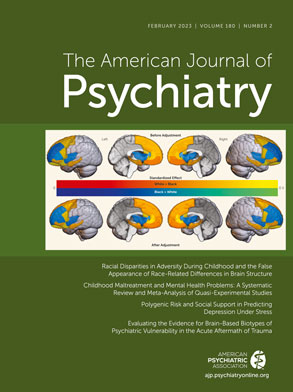Race-Related Disparities in Childhood Adversity, Trauma, and Stress-Related Psychopathology
A Meta-Analysis of Studies Attempting to Elucidate the Causal Role of Childhood Maltreatment on the Development of Psychopathology
The Effects of Racial Disparities in Childhood Adversity on Brain Structure
Stress-Related Depression: Interactions Between the Polygenic Risk to Develop Depression and Social Support
Data Addressing the Reliability of Neuroimaging Predictors of Trauma-Related Outcomes
Comparing Treatments for PTSD With Comorbid Alcohol or Other Substance Use Disorders: A Meta-analysis Using Individual Patient Data
Conclusions
References
Information & Authors
Information
Published In
History
Keywords
Authors
Funding Information
Metrics & Citations
Metrics
Citations
Export Citations
If you have the appropriate software installed, you can download article citation data to the citation manager of your choice. Simply select your manager software from the list below and click Download.
For more information or tips please see 'Downloading to a citation manager' in the Help menu.
View Options
View options
PDF/EPUB
View PDF/EPUBLogin options
Already a subscriber? Access your subscription through your login credentials or your institution for full access to this article.
Personal login Institutional Login Open Athens loginNot a subscriber?
PsychiatryOnline subscription options offer access to the DSM-5-TR® library, books, journals, CME, and patient resources. This all-in-one virtual library provides psychiatrists and mental health professionals with key resources for diagnosis, treatment, research, and professional development.
Need more help? PsychiatryOnline Customer Service may be reached by emailing [email protected] or by calling 800-368-5777 (in the U.S.) or 703-907-7322 (outside the U.S.).

